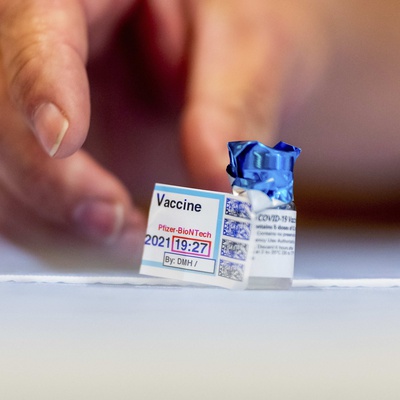You are here
Rural clinics face unique challenges in connecting perishable vaccines with residents who often live miles away.
Primary tabs
 With Fewer Resources, Rural America Tackles Vaccine Distribution Rural clinics face unique challenges in connecting perishable vaccines with residents who often live miles away. Route Fifty
With Fewer Resources, Rural America Tackles Vaccine Distribution Rural clinics face unique challenges in connecting perishable vaccines with residents who often live miles away. Route Fifty One afternoon this past December, a package arrived at Mora Valley Community Health Services in northern New Mexico. The rural clinic, which serves a county of 4,521 people, is nestled beside a pasture with a flock of chickens and a few goats. A mile up the road sits the town of Mora — a regional hub just big enough for a trio of restaurants, two gas stations, and a single-building satellite office for a nearby community college.
Shortly after the package arrived, clinic staff received an email explaining that this “ancillary convenience kit” was a test of the system designed to transport SARS-CoV-2 vaccines from the state’s warehouse to Mora and other rural communities across the state. While this package contained supplies for administering the vaccine — syringes, needles, alcohol swabs, and more — the real challenge would occur the following week. That’s when 100 doses were scheduled to be delivered, and the clinic’s staff would have 30 days at most to administer the doses before they spoiled.
As promised, the vaccine arrived on Dec. 21. Staff worked in phases, stationing patients in exam rooms in numbers to match the doses coming from each vial. Each patient completed a health questionnaire, received a shot, and then was monitored for 15 minutes to be sure the vaccine did not trigger an adverse reaction. Within a few weeks, all 100 shots were in arms.
As the United States begins its massive vaccine rollout, health departments across the country are scrambling to plan and adjust, often while simultaneously managing a surge in new Covid-19 cases. “Just trying to keep up and stay alert of what new things are coming down the line is pretty critical,” said Jessica Martinez, a Mora Valley nurse. Rural clinics face unique challenges in getting highly perishable vaccines to residents who often live many miles away. “We’re kind of out here on our own,” she said.
Additionally, data show that rural residents are less likely to receive a flu shot than residents of metropolitan areas. This trend, combined with the reluctance of rural communities to embrace coronavirus mitigation measures, has some experts worried: “Think about a person who needs to drive one hour for a shot, then do the same 20 days later for a second shot,” said Diego Cuadros, a professor of health geography and disease modeling at the University of Cincinnati. “If it’s a person who maybe doesn’t think this is too important, or has some misperception or misinformation about vaccines, this is going to be extremely challenging.”
Ultimately, Cuadros and others worry that the virus might linger in pockets of rural America, from which it could reemerge into the broader population, compromising efforts to get the virus under control. To prevent this, health care workers are starting with a public information campaign, while state health departments are encouraging pharmacies to run outreach clinics and set up new sites for vaccinations. Currently, the most pressing issue facing less populated areas is how to store and administer vaccines before they lose their effectiveness. ...



Recent Comments